site search
online catalog
RARE MARKED CIVIL WAR ARMY ISSUE SHOE
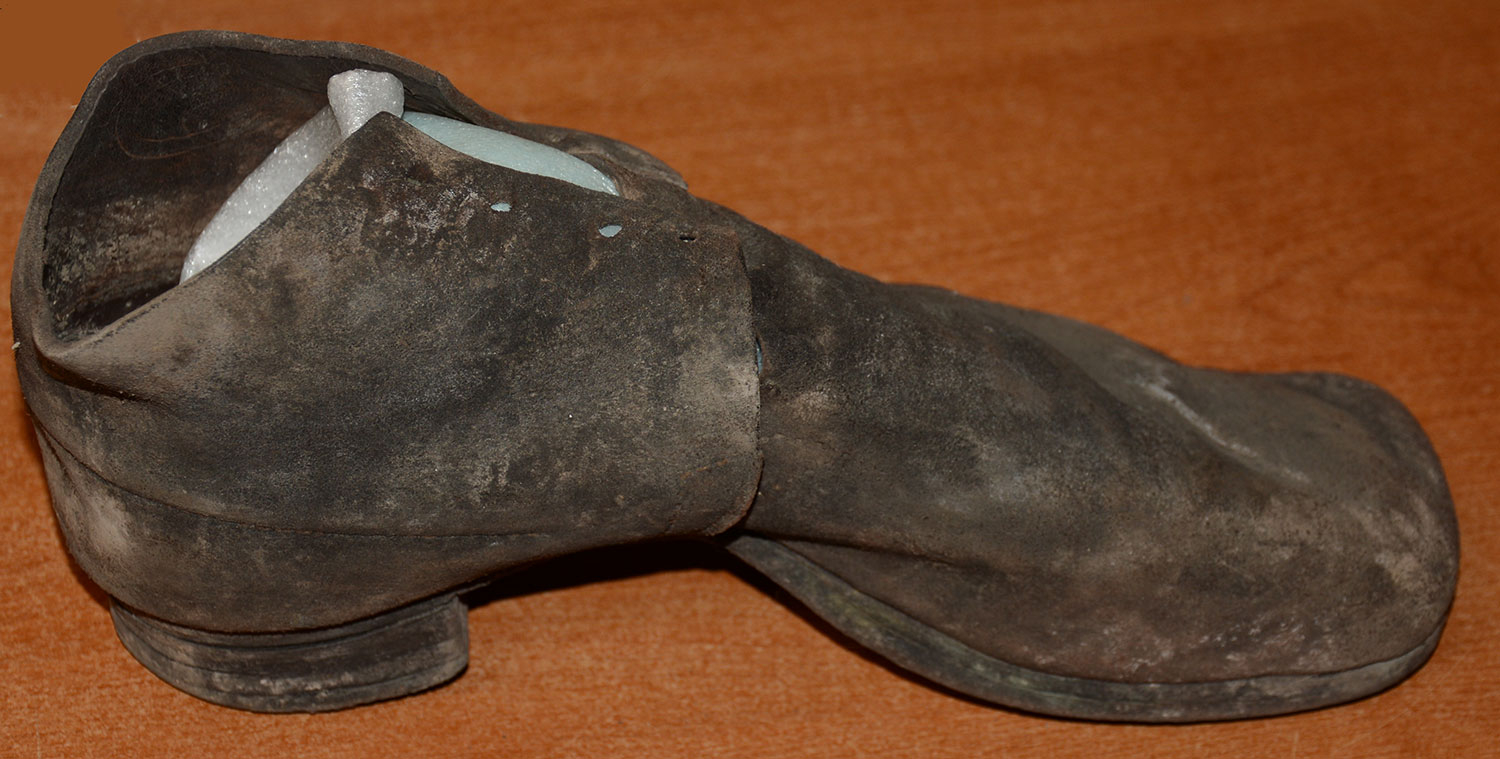
Hover to zoom

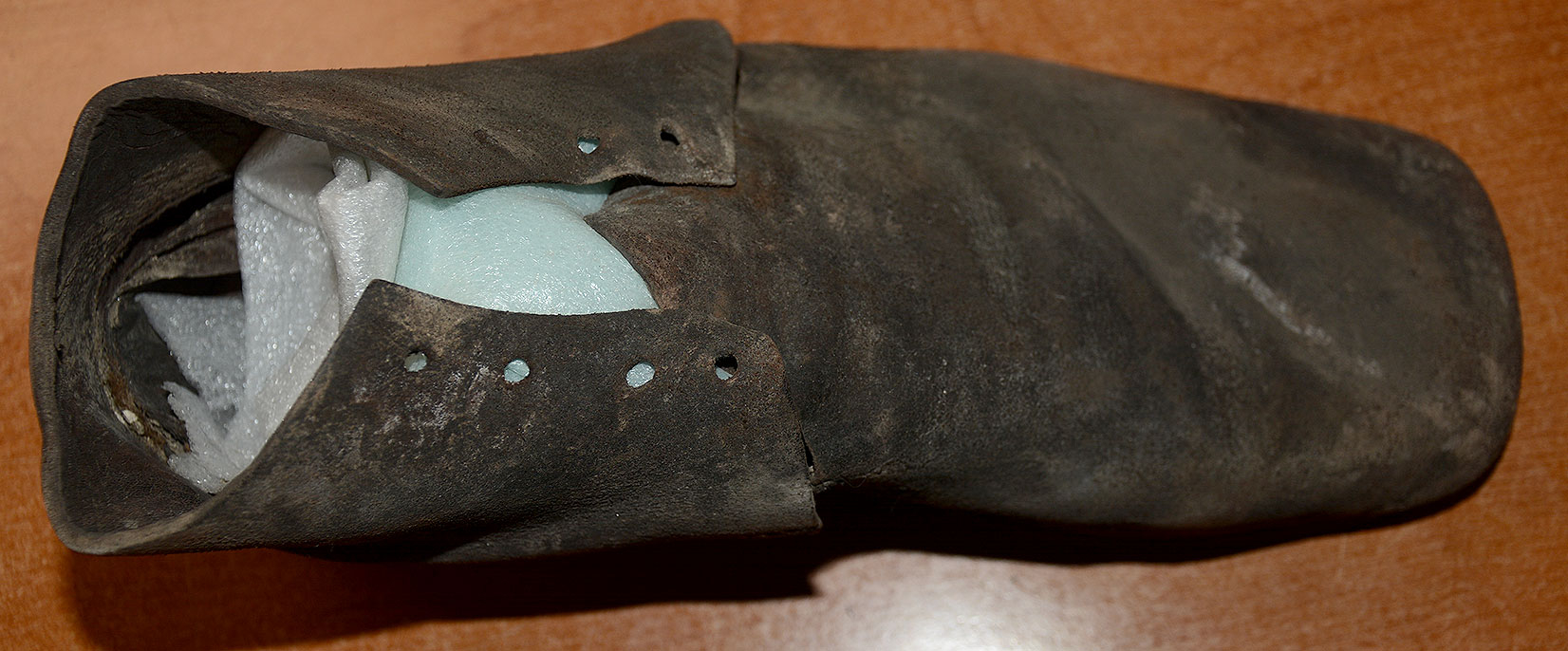
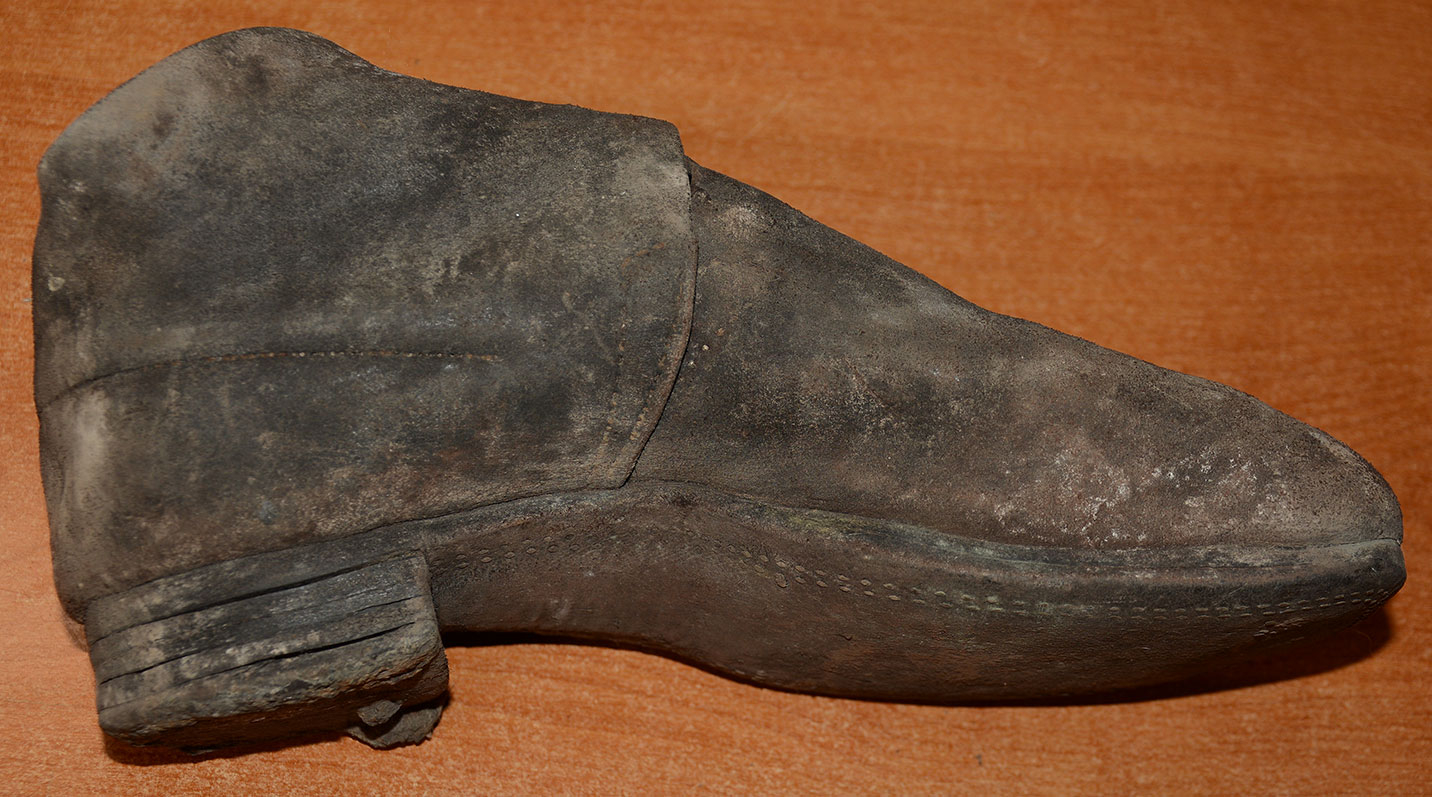
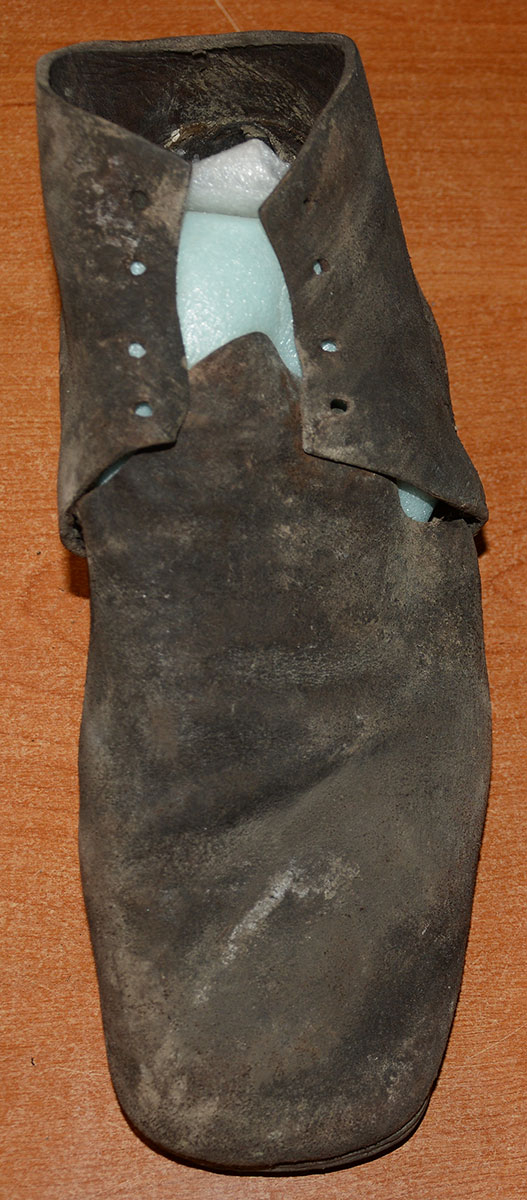
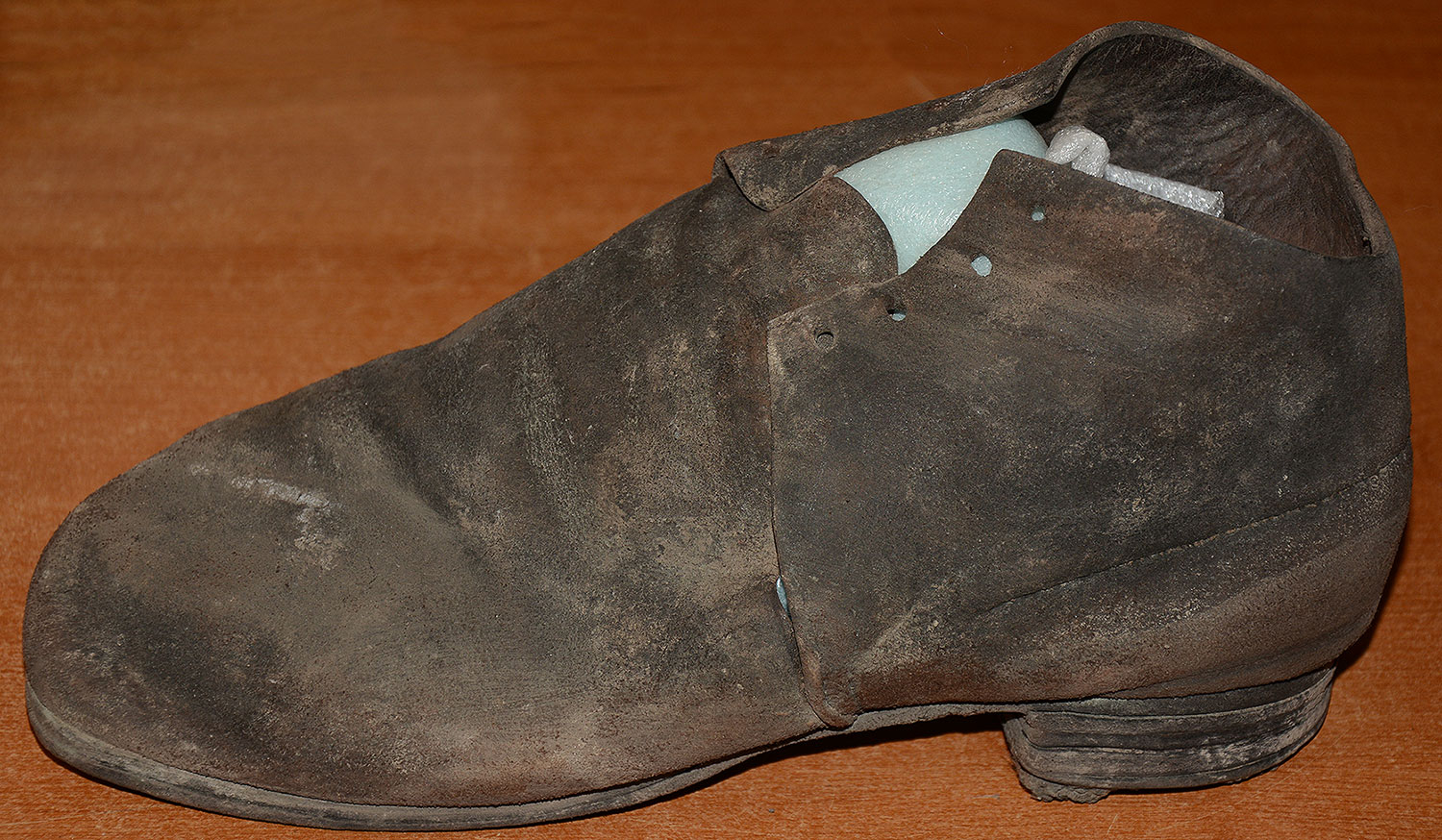
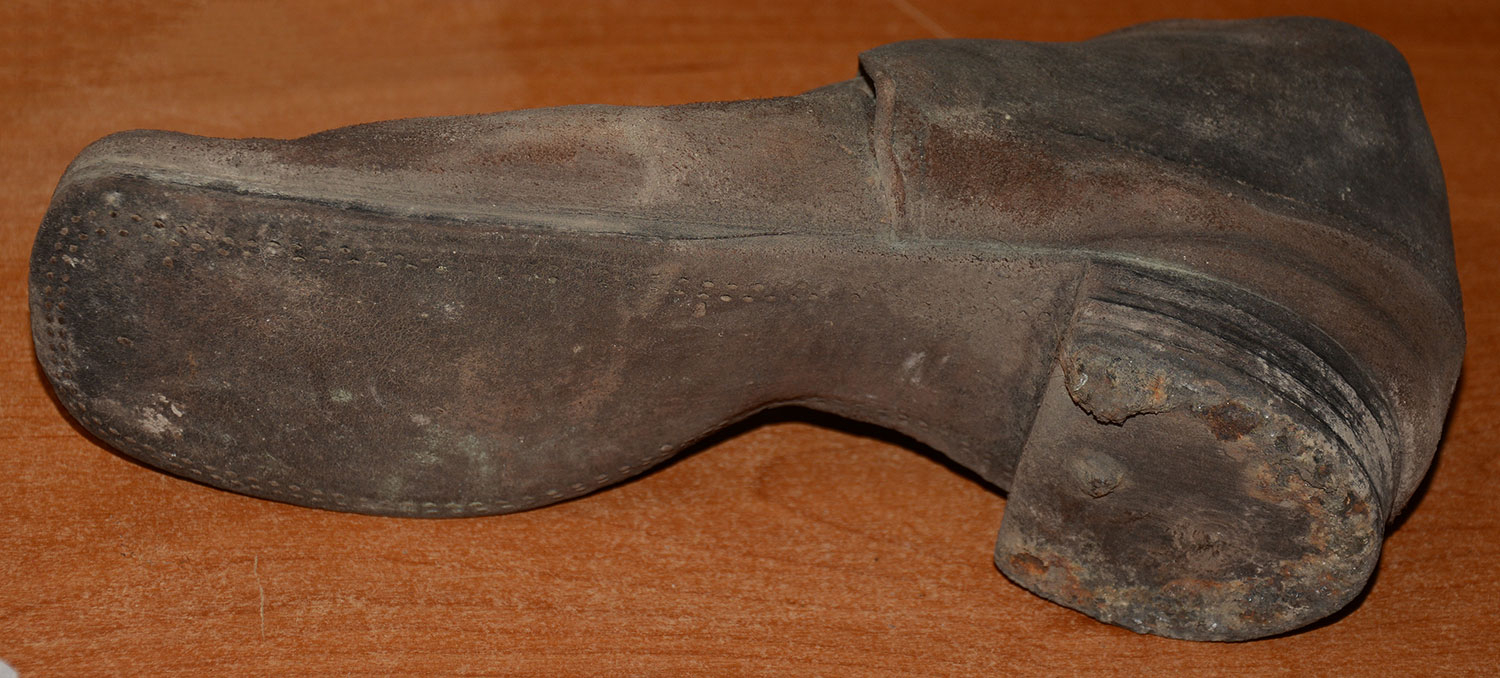
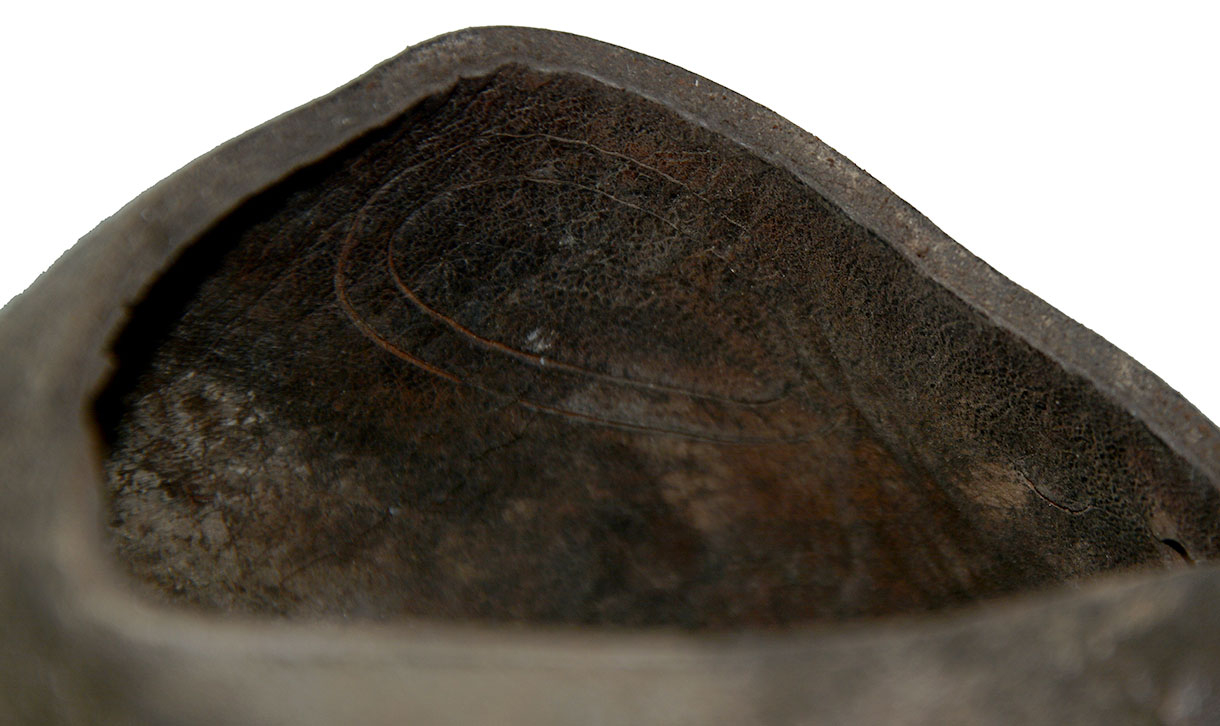
$3,250.00
Quantity Available: 1
Item Code: 1052-286
Shipping: Determined by Method & Location of buyer
To Order:
Call 717-334-0347,
Fax 717-334-5016, or E-mail
Civil War army-issue shoes were among the most essential things issued to a soldier and about the rarest of Civil War items to survive despite being made literally in the millions. They were cheaply made, readily worn out on campaign and were discarded and replaced as opportunity offered. After the war surplus stocks sufficed until the army changed patterns in 1872, while those worn home by veterans, being hardly sentimental mementos or inspiring relics of patriotic service, were used as work shoes if at all and then thrown out.
This is a great example, intact and complete except for the shoelace / thong, is the typical wartime construction as supplied through government depots, and bears an oval inspector or contractor stamp inside the upper left. The body is rough-side out black leather consisting two-piece uppers (vamp and quarters) sewn together low on the instep, with reinforcing heel piece or “counter” sewn inside, four pairs of holes for a leather thong/lace, square toe, nailed heel and pegged sole - one of the two general Civil War types: pegged or sewn, further broken down by hand or machine made. The sole is very good, shows little wear and has all the pegs in place. The heel is in place, fully intact, with the four layers firmly held to the sole by the nails, which shows some crud and corrosion on the bottom. The layers are pretty tight, with just some very narrow, short gaps. The uppers fully intact, with no holes or tears, are a dusty, charcoal black with some thin whitish-gray stains and some rubs, mostly on the toes. The counter is in place inside the heel. The stitching of the uppers to the sole is fully intact, with no gaps or holes. The stitching at the instep on either side is gone, but the leather is pretty stiff and the shoe holds its shape and form regardless, even if the stitching holes do not line up. The shoe can be handled, and displays very well. The sole is broad and not narrowly contoured, but does show this is a left shoe. Inside the quarters at the left ankle is an oval stamp that might be made out with some patience and good lighting. There is lettering we cannot quite make out in the center and in a band around the edge. At the lower right, however, we clearly make out “N.Y.” This is a usual position for a make or an inspector stamp.
This was the standard pattern for the army shoe until 1872, when campaigning on the dry and rocky ground of the southwest convinced the army to start using brass screws to secure the soles of shoes and boots. The condition is very, very good and this would is easily taken as a barn or attic-find from a veteran’s estate, but actually comes from Fort Pembina, ND, established in 1870 by troops who, at that point, were still clothed and equipped with Civil War uniforms and gear from government stocks. Excavations were conducted on private property with owner’s consent and anaerobic soil conditions have yielded cloth and leather gear in remarkable states of preservation. (Think of some of the Roman pieces coming from similar conditions at the British fort of Vindolanda.)
Situated in the Red River Valley in North Dakota near the Canadian border, was established in 1870 and in operation until 1895. Trading posts existed earlier in the area as part of the fur trade, and the first U.S. military post there was temporary- manned by a detachment of Minnesota troops in 1863-1864 following the 1862 Sioux uprising. In March 1870 a new fort was established south of the Pembina River and about 200 yards west of the Red River, completed by July and named in honor of Gen. George H. Thomas. The name was changed to Fort Pembina in September and the initial garrison consisted of two companies of the 20th US Infantry. Their main duty was to provide security for settlers worried about Sioux returning south from Canada, but the troops were more occupied with escorting boundary surveys along the Canadian border and preventing Fenian raids heading north into Canada.
The fort included enlistedmen’s barracks, officers’ quarters, guard house, ordnance storehouse, company kitchen, root house, laundress’s quarters, quarters for civilian employees, hospital and hospital servant’s house, a barn for the “hospital cow,” quartermaster and commissary offices and storehouse, stables, wagon shed, etc. The garrison reached peak strength in 1878 af 200, but the average was about 125 enlisted men and 8 officers. An October 1885 return listed 97 men, 2 field pieces, 1 mountain howitzer, 100 rifles, 19 pistols, 23 mules, and 9 wagons. By 1890 the post had just 23 men, and after an 1895 fire destroyed some 19 buildings it was decided to abandon the fort rather than rebuild, the last detachment left in September. The property was turned over to the Interior Department and later sold in 1902.
This is a very scarce piece of Civil War gear in great condition that would add to a Civil War collection and display or one concentrating on the early Indian War frontier army. We recommend “The Army Shoe” by J.E. Tobey in the Columbia Rifles Research Compendium, as well as articles in Company of Military Historians, Brinkerhoff’s Boots and Shoes of the Frontier Soldier, and McChristian’s excellent volumes on the postwar US army. [sr] [ph:L]
~~~~~~~~~~~~~~~~~~~~~~~~~~~~~~~~~~~
THIS ITEM, AS WITH ALL OTHER ITEMS AVAILABLE ON OUR WEB SITE,
MAY BE PURCHASED THROUGH OUR LAYAWAY PROGRAM.
CLICK HERE FOR OUR POLICIES AND TERMS.
THANK YOU!
Inquire About RARE MARKED CIVIL WAR ARMY ISSUE SHOE
Most Popular
Historical Firearms Stolen From The National Civil War Museum In Harrisburg, Pa »
Theft From Gravesite Of Gen. John Reynolds »
Selection Of Unframed Prints By Don Troiani »
Fine Condition Brass Infantry Bugle Insignia »
Large English Bowie Knife With Sheath 1870’S – 1880’S »
Imported (Clauberg) Us Model 1860 Light Cavalry Officer's Saber »
featured item
AMBROTYPE OF IDENTIFIED MUSICIAN OF THE PETERSBURG MILITIA
Formerly in the collection of Bill Turner, this sixth plate ambrotype has a great pedigree, having been published as Figure 2 in Albaugh’s landmark “Confederate Faces.” Identified there as a, “Musician named Crowder, of Petersburg, Va., in… (1138-1866). Learn More »


